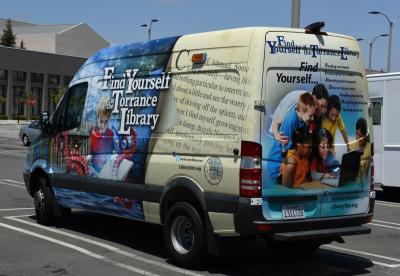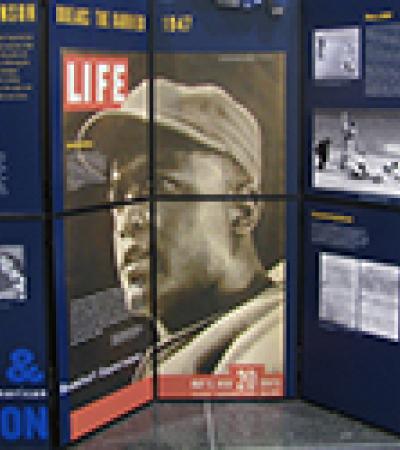Arguably, one of the most challenging things about programming is getting the word out. We all create programs for the community, many of them successful. Some are not as successful as we would like due to attendance. This can be extremely frustrating. I can’t tell you how many times in my programming career I have felt the sting of low turnout. Now, “low turnout” may sound like a made up malady dreamt up by Big Pharma, but I am telling you, it is real. Occasionally, patrons would come up to me after an event and say, “Great program, too bad there weren’t more people here.” And just like a pharmaceutical ad, I would look down and say to the camera, “I know I have low turnout, but what do I do?!?!” and just then, the whole world would freeze and fade to black and white.
Unfortunately, there aren’t many solutions left. We all use traditional media and social media to get the word out. However, many of those avenues only reach our core constituency. It’s difficult to reach non-users, especially the people in our community that aren’t already aware of the library. So needless to say, I am always looking for new ways to promote the library, our programs and services. What’s surprising is there are often a lot of good ways to promote libraries right under our noses. A good example of this was our recent library van wrap project.
The library delivery van spends approximately five hours on the road in our lovely city, traveling approximately 20 miles. That’s about 54 days and 5,200 miles a year ... That's a lot of face-time with our citizens. Instead of people staring into the stark white abyss of our delivery van, I thought, they could be viewing a beautiful vista of library promotion.
One day, while walking to the library, I noticed our old delivery van parked outside. Our van was a nondescript vanilla white Econoline van. It looked like it could be carrying anything. I always thought it looked like it belonged to a hospital. Not a sexy "Grey’s Anatomy" hospital — more a scary "American Horror Story" hospital. To be fair, it was purchased in a time when bleak white Econoline vans were all the rage. Everyone had one.
This particular day, our delivery person was busy loading the van with bags of goodies to be sent to and fro between our six locations. Kind of like Santa Claus, only more arduous, back-breaking, and instead of being seasonal, it lasts everyday and forever. Sending materials between our branches is no small task. It’s not only books, CDs and DVDs; every day, we send supplies, letters and occasionally even furniture through delivery. I even sent a pumpkin through, just to see if it would work. And like magic, it did. It turns out that if you slap a delivery flag on something, it gets delivered, no questions asked. I stopped short of trying this on myself because I thought HR might frown upon it.

As I continued my slog to my office, I began to think of how our van must travel hundreds of miles a year throughout our beautiful city each and every year. I later did the math, and each day, the library delivery van spends approximately five hours on the road in our lovely city, traveling approximately 20 miles. That’s about 54 days and 5,200 miles a year. The van passes busy intersections, schools and shopping centers. That's a lot of face-time with our citizens. Instead of people staring into the stark white abyss of our delivery van, I thought, they could be viewing a beautiful vista of library promotion.
Just in case you didn’t know, Econoline vans aren’t the best canvases; by today’s standards, they are fairly limited in space and size. So I called our city's fleet services department and asked about the possibility of an upgrade. Coincidently, they told us there were some funds available for vehicle replacement. The amount was not huge, but certainly enough to shop around with. I then scheduled a meeting with our fleet services manager to discuss our options.
On the day of the meeting, I parked in the city’s fleet services yard and began walking across the parking lot. The lot was filled with vehicles of all shapes and sizes and one in particular caught my eye. It was a pristine Freightliner Sprinter Cargo van.
Now, if you ask someone if they believe in love at first sight, they may say yes. They may even relay the story of how they met their significant other. If you asked me the same question, I will say yes and tell you about the first time I saw that Freightliner Sprinter Cargo van. Why? Because I got lightheaded and my heart skipped a beat. (It was either love at first sight or I was finally feeling the effects of the Trenta iced coffee I ordered that morning with 12 additional shots. I’m going with true love.) Regardless, it turns out we were meant for each other. The van was slated to be a mobile CSI unit for the police department, but due to some logistical issues and changes in requirements, the van was available. In a couple of weeks and a few negotiations with our police department, we had our new Freightliner Sprinter Cargo van.
Next we wanted the van vehicle-wrapped. Believe it or not, getting a vehicle wrapped can be very complex process. The design itself had to translate well to a large-scale vehicle like a Freightliner Sprinter Cargo. Designs also have to be clear and concise because, let’s face it, when you're hurtling down the highway with your left hand loosely grasping the steering wheel and your right hand tightly clutching a Trenta iced coffee, you don’t have a lot of time to read the side of a van. The design has to convey a concept, brand and a message in the briefest moment of time.
After several attempts to design the wrap internally, we decided to consult with a professional design firm. This was a critical juncture of the project. The designer had years of experience working with all manner of media. They met with us, conducted interviews and collected several of our printed brochures. A few weeks later, we had some expertly crafted designs and logo. Our final wrap design became a banner of “Find Yourself at the Library” with imaginative images of young people exploring the library and its resources.
The designer incorporated another element into the design we had not thought of originally. Along with incorporating our social media presence, they purchased a special URL for the van called LibraryVan.org. They designed this website specifically for the van to promote all our services, collections and programs. With Google Analytics, we can now we can tell how many people are being virtually driven to the library.
Once we decided on the final wrap design, we contracted with a vehicle wrap installer. The installer picked up the van and drove it to their shop. There they printed the design on a template based on our vehicle specifications using industry standard materials. Library staff researched laminate materials to ensure we had the right type. Choosing the laminate material is vital because the image should be vibrant, last a long time and not fade. The installer then painstakingly applied the wrap to the vehicle.
On a cool spring Saturday afternoon, I received a text from my colleague. The van had been delivered and was parked in the library parking lot. When I arrived to see the result of all our staff’s hard work, I was amazed. Our director was impressed and created a Twitter account for the van. Now the van tweets around town alerting people to all the cool things we are doing in the community. We even took the van to City Council one night.
We turned what was an old dreary delivery van into an attractive and inspirational library promotion. I can’t say that I don’t occasionally suffer from “low turnout,” but thanks to the van, things are getting better!


